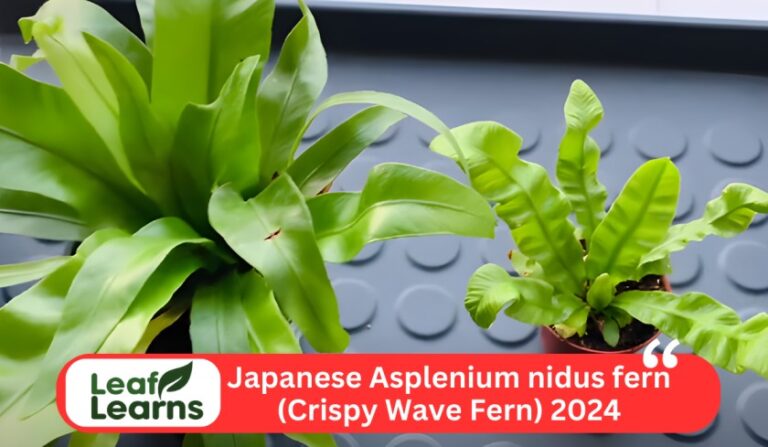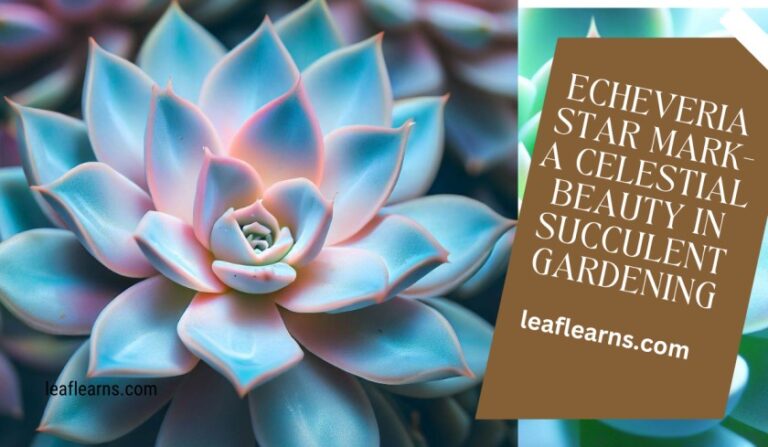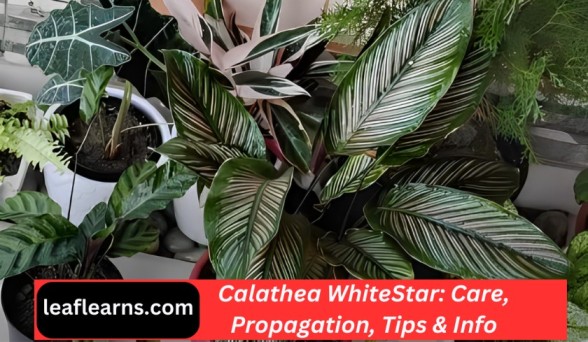Thimble Cactus | Mammillaria Gracilis: Grow and Care Guide
Looking for a green addition to your home that is easy to grow, thimble cactus doesn’t require too much water, and can take full sun. I present Mammillaria gracilis, also known as the thimble-cactus.
This beautiful, small cactus has a cylindrical green body covered in interwoven white spines, giving it the appearance of silver-gloved fingers when viewed from a distance. It grows in clusters and propagates very easily.
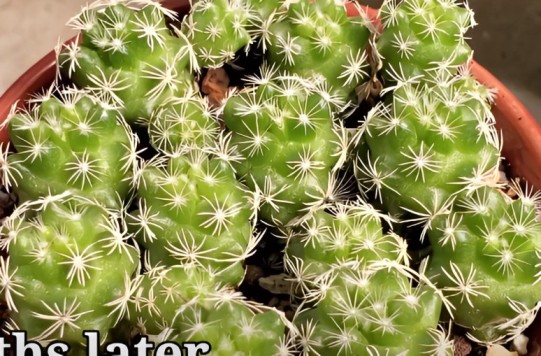
So, whether you’re a seasoned plant enthusiast or a beginner looking for a low-maintenance green companion, Mammillaria gracilis is the perfect choice for your home.
Keep reading for everything you need to know about growing this super hardy cactus succulent in your own home and start enjoying its beauty today!
| Common name | Thimble Cactus |
| Scientific Name | Mammillaria gracilis |
| Family | Cactaceae |
| Distribution | Mexico, parts of the southwestern United States |
| Plant type | Perennial cactus |
| Mature Height | Less than 6 inches |
| Light requirement | Bright & sunny |
| Soil requirement | Well-draining |
| Watering Need | once every 2-4 weeks |
| Special features | Clustering habit, attractive white spines, and small, colorful flowers. |
Contents
- 1 Importance of Proper Care and Maintenance
- 2 Thimble Cactus/Mammillaria gracilis Care
- 3 Flowering
- 4 Care Tips for Mammillaria gracilis
- 5 Common Care Mistakes to avoid
- 6 Thimble Cactus/Mammillaria gracilis Growth
- 7 Typical growth stages
- 8 Monitoring and assessing growth
- 9 Thimble Cactus: Nurturing Your Delicate Desert Beauty
- 10 Propagation
- 11 FAQs
- 12 Conclusion
Importance of Proper Care and Maintenance
To ensure the health and life of the this plant, technically known as Mammillaria gracilis, proper maintenance and care are required.
This unusual and endearing cactus species, distinguished by its diminutive size and delicate look, depends for suitable sun exposure, porous soil, and careful watering techniques to flourish.
Carelessness might result in problems including straining, illness, or premature ageing. You may appreciate the beauty of this cactus for many years to come by giving it the appropriate attention and care.
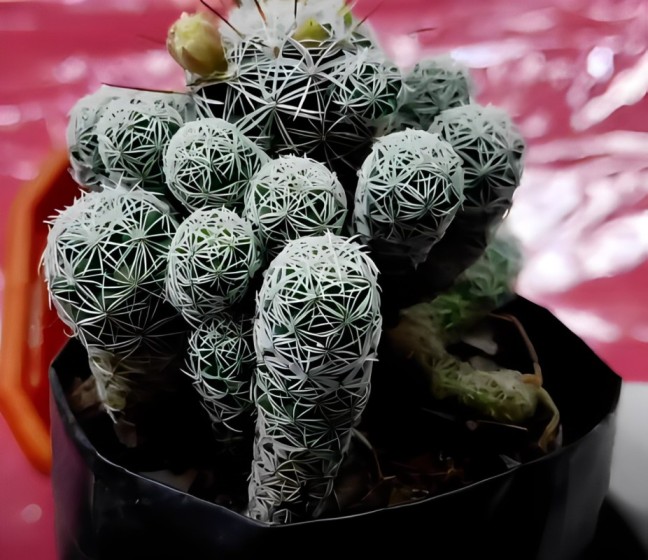
Thimble Cactus/Mammillaria gracilis Care
Light requirements for Mammillaria gracilis
Mammillaria gracilis prefers bright, indirect light to flourish. Place it next to a south or east-facing window so that it may get filtered sunlight for a sizable chunk of the day in order to ensure its healthy growth.
Avoid leaving it out in the sun for long periods of time since this might cause sunburn or burning of the plant’s fragile, cylindrical stems.
Finding the ideal level of light exposure is essential because it lets the Mammillaria gracilis show off its adorable, white spines and vivid green colour without endangering it from overexposure to the sun.
Soil considerations
Prioritising well-draining soil is essential when choosing a location for Mammillaria gracilis. If its roots are left in damp soil, this kind of cactus is very prone to developing root rot.
Choose a potting mix designed specifically for succulents or cacti that has great drainage instead. Perlite or coarse sand can be added to the mixture to improve drainage even further.
Additionally, establishing slightly acidic to neutral pH levels in the soil (between 6.0 and 7.0) can assist your Mammillaria gracilis’s optimal nutrient intake and general health.
Humidity
Mammillaria gracilis may survive in arid environments. Avoid situations that are too humid since they can cause fungus problems, and make sure enclosed places have enough ventilation.
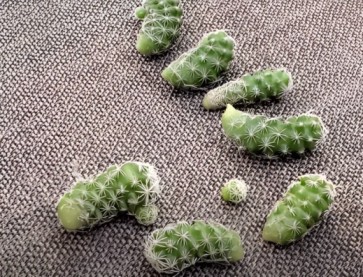
Watering guidelines
This plant needs to be watered carefully and according to a set of rules. These little cactus are indigenous to dry areas, where they have evolved to thrive in the sparse rainfall.
Allowing the soil to completely dry out between watering is important to prevent over watering. During the growth season (spring and summer), watering should normally be done every two to three weeks, and during the dormant season (autumn and winter), they should be done no more frequently than once a month.
To prevent rot, you should always water the plant from the base up and away from the spines. Use a well-draining cactus or succulent mix, and alter the watering schedule according on climatic aspects like temperature and humidity to ensure that the soil dries out sufficiently to support a healthy and flourishing Mammillaria gracilis.
Pot size and container selection
Keep in mind the compact character of your Plant while choosing a pot size and container. Choose a pot that gives the cactus about 1-2 inches of space around it so that it may grow comfortably.
The best container is a compact, shallow one with adequate drainage, as this helps avoid overwatering and root rot.
Consider choosing a container made of a somewhat porous material as well, such as terracotta, since this can help control moisture levels by allowing some evaporation through the pot’s walls.
By retaining the ideal moisture levels and reducing the risk of waterlogged roots, the optimal pot size and container choice will promote the cactus’s health.
Flowering
The spring and summer are the normal times that mature of this bloom. The cactus may also bloom in the winter in areas with warm winters.
Each stem’s crown has flowers that bloom for a few days to a week. Over the course of the growing season, each cactus will produce a number of blooms.

Care Tips for Mammillaria gracilis
Here are some tips for caring:
Light
Make sure there is at least six hours every day of bright, indirect sunshine. Although it can handle some early sunshine, afternoon sun should be avoided.
During the growth season, keep your plant in a warm area, ideally between 70°F and 100°F (21°C and 37°C). Although it should be sheltered from frost, it can endure colder winter temperatures.
Soil and Pot
Plant in cactus or succulent potting soil that drains well. In order to avoid waterlogging, make sure the pot includes drainage holes.
Watering
Use only a little. Between waterings, let the soil totally dry out. During the growth season (spring and summer), water typically once every two to four weeks, and less frequently during the dormant season.
Humidity:Mammillaria gracilis is appropriate for indoor growing in arid locations since it needs low to moderate humidity levels.
Fertilization
Feed with a diluted, balanced liquid fertilizer every 4-6 weeks during the growing season. Avoid fertilizing during the dormant period.
Container: As these cacti prefer to be a little root-bound, use a container that provides them some area for growth while not being overly huge.
Pruning
Prune or remove dead or damaged offsets (baby cacti) carefully using sterilized scissors or pruning shears.
Pests and Diseases
Watch out for pests like scale insects and mealybugs. Neem oil or insecticidal soap should be used right away to treat any infestations. To avoid mould or fungus problems, make sure the ventilation is excellent.
Repotting
Repot every 2-3 years or when the cactus becomes visibly overcrowded in its container.
Handling: Be cautious when handling ypur plant as they have small spines that can be painful if touched. Wear gloves if needed.
Dormancy
Recognise this cactus’ normal development cycle. During the winter, when it needs less water and no fertiliser, it may go into hibernation.
Protection from Extreme Conditions
Provide shade during sweltering summer days and shield your cactus from harsh extremes, including both heat and cold.
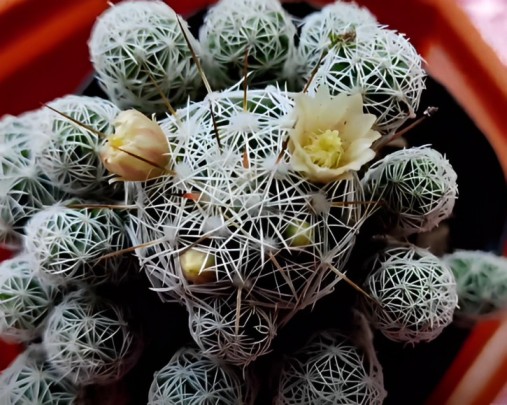
Common Care Mistakes to avoid
Avoiding frequent errors is essential when taking care of the Mammillaria gracilis. First off, it’s important to note that over watering is a common mistake.
This cactus needs a soil that drains well, and it should only be watered when the soil is fully dry to avoid root rot. Second, giving it insufficient sunshine might result in straining and decreased development; make sure it receives enough indirect or partial sunlight.
The health of the cactus can also be harmed by using the incorrect soil, such as one that holds too much moisture.
Thimble Cactus/Mammillaria gracilis Growth
Factors influencing growth rate
Thimble-Cactus (Mammillaria gracilis) growth rate is affected by a number of variables, such as:
Thimble-cactus prefer strong, indirect sunshine to survive. While too much light might stress them out and impede growth, insufficient light can inhibit their development.
Temperature: Temperature is crucial to their development. In cold temperatures, they may stall down or fall dormant since they prefer warm weather.
Watering Methods: Growth might be hampered by overwatering or underwatering. This plant should only be watered occasionally, letting the soil dry out in between applications, and appreciate a well-draining soil mixture.
A healthy soil with adequate drainage is essential. By using a cactus or succulent mix, you may prevent the roots from being saturated with dirt, which could limit development.
Pot Size: It need compact pots. Overly big pots might result in excessive soil moisture, which can hinder development.
Fertilisation: Occasionally fertilising these cacti in the spring and summer is beneficial. However, too much fertiliser might cause the plant to grow excessively and may unnecessarily stress it.
Pests and diseases: Diseases or infestations can impede development. Inspect and treat for pests on a regular basis, and maintain good hygiene to avoid infections.
Age and Plant Health: Young Thimble Cacti usually develop more quickly than older ones do. Consistent growth can be aided by keeping the plant healthy and free of stressors.
Cultural customs: Repotting frequency, potting mix selection, and level of care can all have an impact on how quickly plants develop.
Seasonal Variations: Growth rates will unavoidably change as the seasons change. Thimble cacti may be more active in the spring and summer, when they are growing, and less active or dormant in the winter.
Genetic Variability: The same species of plants might grow at somewhat varying rates depending on the individual plants.
Typical growth stages
Seedling Stage:
Initially, Thimble-Cactus is just a seedling. Because of their vulnerability at this time, they require particular attention and safeguards against adverse weather.
Juvenile Stage
The cactus begins to take on its distinctive cylindrical form with little tubercles and spines as it ages. During this stage, the cactus grows slowly and stays a modest size.
Adolescent Stage
In this stage, the cactus continues to grow in size, and the tubercles become more pronounced. It may start producing offsets or pups around its base.
Mature Stage
When the plant reaches maturity, it is still rather little in comparison to other cactus species. It develops blooms at this stage, which might result in the development of fruit.
Reproductive Stage
The cactus can start to produce fruits and flowers as it reaches maturity. This is a crucial stage for the cactus’ ability to reproduce through seeds or offsets.
Aging Stage
Mammillaria gracilis ages, just like all living things. The cactus’s general health and look can alter over time, and it may exhibit symptoms of halting development.
Monitoring and assessing growth
A crucial part of caring for the Mammillaria gracilis is observing and evaluating its progress. Keep an eye out for any changes in the cactus’ size, shape, or colouring.
Pay attention to the growth of any additional offsets or pups as this denotes sound development. Keep an eye out for the development of any odd marks or discolorations on the cactus since these might be symptoms of stress or illness.
Thimble Cactus: Nurturing Your Delicate Desert Beauty
Caring for Mammillaria gracilis requires attention to various aspects of its growth and maintenance. Understanding the thimble cactus growth rate is essential for gauging its progress. If you’re looking to expand your collection, you can propagate thimble cactus through careful propagation techniques.
This process involves taking cuttings and encouraging root development, allowing you to create new plants from the parent.
Propagation
This plant is propagated most frequently by gathering offsets, or “pups,” which develop at the base of the adult plant.
These little clusters should be carefully separated from the parent plant, given a day or two to callus, and then planted in a soil with good drainage.
After they start to develop and form roots, you may treat them like adult thimble-cactus, which can survive in dry circumstances with just occasional watering. Until then, keep the soil mildly damp and give them indirect sunshine.
FAQs
How do you take care of a thimble cactus?
These plants prefer lots of sun, at least five hours of direct sun daily.
How do you grow a thimble cactus?
It is advisable to grow the Mammillaria gracilis fragilis in a container that can be moved indoors if you reside in a region that experiences temperatures below 30° F (-1.1° C). It thrives in full to some sun. Plants should be placed in a garden area with six hours of direct sunshine each day.
How often should I water a thimble cactus?
Even in the summer when it is vigorously growing, you shouldn’t water the plant until the soil has totally dried out.
Do you water cactus after cutting?
then put it in DRY cactus potting soil and wait 10 to 45 days before watering. Starting a gentle, regular watering cycle is safe once the cutting forms a root system.
How do I know if my cactus needs more water?
It’s time for a drink if the metre reads dry (at 1 on the scale) or if you stick your finger down at least 2 inches without feeling any wetness.
Conclusion
For a healthy Thimble Cactus, ensure proper care. Provide well-draining soil, ample sunlight, and careful watering. Avoid issues like stress, disease, and premature aging.
Follow maintenance guidelines, including the right temperature, soil mix, and weather protection. Don’t over water or skimp on sunlight. Monitor growth and development for its well-being and longevity.


